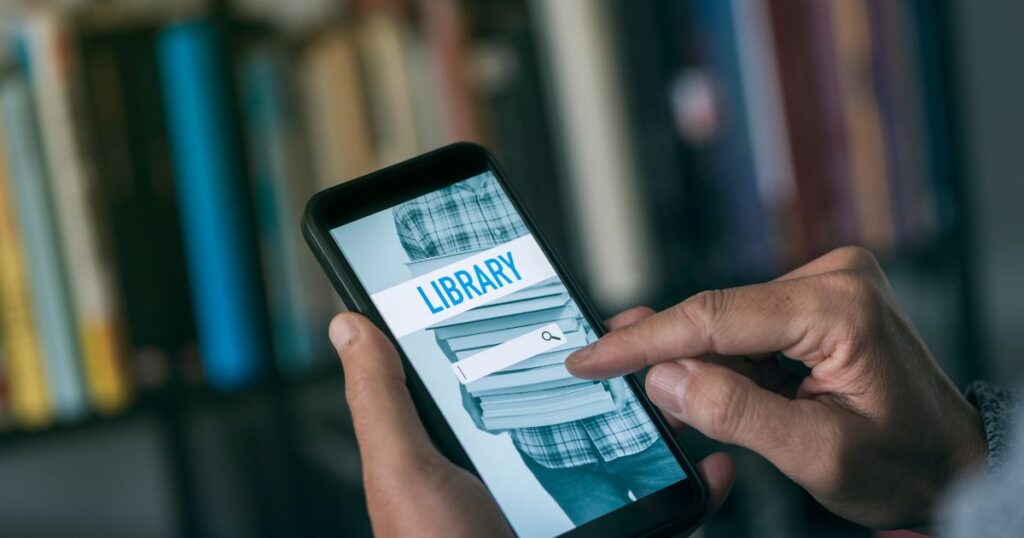
Microlearning: Revolutionize How Your Team Learns and Grows
Let’s talk about microlearning. You can use it to engage employees in workplace learning. Gone are the days of long, drawn-out training sessions. Today, it’s all about quick hits of learning – just enough to get the job done, and just in time to make a real difference.
Why microlearning, you ask? Because in our world of constant change and instant gratification, traditional training methods just don’t cut it anymore. We need learning that’s as dynamic and fast-paced as our work lives.
That’s where microlearning shines. It’s the short, sharp shock of learning – precise, to the point, and most importantly, immediately useful.
I will guide you into the practical application of microlearning. I will share actionable strategies to revolutionize how your team learns and grows.
Identify Key Learning Areas
The first step is identifying the key areas where your team needs to level up. It’s about pinpointing those specific skills or knowledge gaps that, once filled, will make the biggest impact on their performance and productivity.
This could range from technical know-how specific to your industry, to universal soft skills like effective communication or time management.
Focus is everything. By zeroing in on the most critical learning areas, you ensure that every minute spent in training is valuable and directly beneficial to the work at hand. It’s about quality, not quantity.
It’s learning with a purpose, tailored to meet the specific needs and challenges of your team. This targeted approach not only saves time but also boosts motivation, as team members can immediately see the relevance and benefits of what they’re learning.
So, how do you start?
Begin with a simple yet thorough needs assessment. Talk to your team. What do they struggle with? What skills do they wish they had?
Look at your organizational goals. What skills are needed to reach these targets?
Analyze your workflows. Where are the bottlenecks? What expertise could smooth these out?
Gather real, actionable data that can guide your microlearning strategy. Once you have this map of needs, you’ve got your blueprint for building a microlearning program that’s not just educational, but transformational.

Customize Content to Fit Your Team
Customize the microlearning content to align perfectly with your team’s needs and context. This means creating or selecting microlearning modules that speak directly to the specific challenges and tasks your team faces.
It’s about making the content as relevant and relatable as possible, whether it’s through industry-specific examples, role-specific scenarios, or even incorporating your company’s own policies and procedures into the learning material.
When learning material resonates with a learner’s everyday experiences, it becomes more engaging, meaningful, and ultimately, more effective. Customized content ensures that the time spent learning directly contributes to better performance on the job.
Bridge the gap between theory and practice. When team members can see how what they’re learning applies to their daily tasks, they’re more likely to embrace the learning process and apply new skills.
To put this into action, start by collaborating with your team. Gather input on what types of content they find most helpful. Work with subject matter experts to ensure accuracy and relevance.
Consider the different learning styles within your team – some may prefer visual content like infographics or videos, while others might benefit more from interactive quizzes or written guides. Use this information to tailor your microlearning content.
Remember, the goal is to create a learning experience that feels like it was made just for them. This personalized approach not only enhances learning outcomes but also fosters a more engaged and committed team.

Create Engaging and Interactive Content
Make it engaging and interactive. Design microlearning modules that are not just informative but also captivating and hands-on. Transform passive learning into an active experience. This could mean incorporating elements like interactive simulations, branching scenarios, or even simple but effective interactive quizzes.
When content is engaging, learners are not only more likely to complete the training but also to remember and apply what they’ve learned. Interactive elements help in cementing knowledge and skills by allowing learners to practice in a safe, controlled environment. This type of content also caters to various learning styles, making the learning process more inclusive and effective.
So, how do you create this kind of content?
Start by exploring different interactive formats. Use video for visual impact, add quizzes for knowledge checks, and create scenarios that mimic real-life challenges. Tools like branching scenarios, where learners choose different paths and see the consequences of their decisions, can be particularly effective.
Don’t shy away from experimenting with gamification elements such as points, badges, or leaderboards to add a competitive edge. Remember, the aim is to make learning not just a task, but an experience. An experience that’s as enjoyable as it is informative.
This approach not only keeps learners engaged but also ensures that the learning sticks.
Incorporate Microlearning into Everyday Workflows
Integrate these bite-sized learning opportunities into the regular workday. Make learning a natural, almost invisible part of the job. It could be as simple as starting a team meeting with a quick microlearning module, or encouraging team members to complete a short lesson during their morning coffee.
When learning is part of the daily routine, it doesn’t feel like an extra task—it becomes a habit. This approach helps in breaking down the mental barrier between ‘learning’ and ‘doing’. When team members can immediately apply what they’ve learned in their actual work context, it reinforces the new skills and knowledge, making them more meaningful and sticky.
It’s about creating a culture where learning and working are not separate activities but are interwoven into a continuous cycle of growth and improvement.
To make this happen, identify natural touchpoints in your team’s day for microlearning. Encourage leaders and managers to model this behavior by integrating learning into their own routines.
Provide easy access to microlearning resources—like a dedicated section on the company intranet or a mobile app. Encourage and reward regular engagement with microlearning content.
The goal is to make accessing and completing microlearning modules as easy and routine as checking email. This way, you turn skill development into a daily practice, not just an occasional event.
Foster a Culture of Continuous Learning
Cultivate an organizational culture that values and encourages continuous learning. Create an environment where seeking knowledge, exploring new skills, and personal growth are actively promoted.
Shift the mindset from learning being a mandatory task to it being a valued part of personal and professional development.
In a learning culture, employees are more likely to take initiative in their own development, leading to a more skilled, adaptable, and innovative workforce. Continuous learning helps keep skills fresh and relevant, which is crucial in today’s rapidly changing work environment.
Moreover, a culture that values learning tends to be more dynamic, forward-thinking, and resilient to challenges.
So, how do you foster this culture?
Start by leading by example. When leadership prioritizes and engages in learning, it sets a tone for the whole organization. Recognize and celebrate learning achievements, whether it’s completing a series of microlearning modules or applying new skills effectively on the job.
Provide opportunities for sharing knowledge, such as peer learning sessions or informal ‘lunch and learn’ gatherings. Encourage feedback and suggestions on the learning content and process, making it a collaborative effort. And most importantly, ensure that there are no barriers to accessing learning—make it easy, accessible, and encouraged for everyone.
Create an environment where continuous improvement is the norm, not the exception.
Deep Dive: Create a Culture of Continuous Learning

Provide Access to a Diverse Learning Library
Offer access to a diverse and comprehensive library of learning modules. This library should cater to a wide range of topics, skill levels, and learning styles, ensuring there’s something for everyone. Whether it’s deepening expertise in a specific area or exploring entirely new domains, the learning library should be a treasure trove of knowledge and skills development opportunities.
A diverse learning library allows individuals to tailor their learning journey according to their unique needs and career goals. It respects the fact that each team member has different interests and learning preferences.
This diversity not only keeps the learning experience fresh and engaging but also ensures that the learning is inclusive and comprehensive. It helps in building a workforce that is not only skilled but also versatile and well-rounded.
To build this library, start by sourcing content from reputable providers or creating custom content that reflects your organization’s specific context and needs. Regularly update the library with new and relevant content, and keep an eye out for emerging trends and skills.
Encourage feedback from learners about what types of content they find most helpful or engaging.
Finally, make sure that accessing this library is easy and intuitive. Whether it’s through a dedicated learning platform, an internal network, or even a mobile app, the key is to ensure that these resources are just a few clicks away, anytime and anywhere.
Deep dive: Content Creation for the MicroLearning Library
Read: Building a Learning Library in Hospitality and Adventure

Use Feedback for Improvement
Regularly seek input from learners about their experiences with the microlearning modules – what they like, what they don’t, what they find useful, and what could be improved. This feedback loop is essential for continuously refining and enhancing the learning experience.
Why is feedback so pivotal?
First, it ensures that the microlearning content remains relevant, engaging, and effective. Feedback helps in identifying areas where the content might be lacking or where the delivery method could be improved.
It also empowers learners by giving them a voice in their learning process, which can increase engagement and investment in the program. This iterative process of feedback and improvement keeps the content aligned with learners’ evolving needs and the dynamic demands of the workplace.
To effectively use feedback, establish regular check-ins or surveys where learners can share their thoughts on the microlearning modules. Make this process simple and accessible.
After collecting feedback, analyze it to identify common themes or suggestions. Importantly, act on this feedback – update content, try new formats, or adjust the pacing as needed. Communicate back to the learners the changes made based on their input, closing the feedback loop.
This not only improves the quality of your microlearning program but also builds a sense of community and shared purpose among learners.
Remember, effective microlearning is a collaborative effort, shaped by both those who teach and those who learn.
Measure Impact and Make Adjustments
The final, crucial step in the microlearning journey is measuring its impact and making necessary adjustments. This involves evaluating how the microlearning modules are affecting team performance, skill levels, and overall business outcomes.
Are team members applying what they’ve learned? Are there noticeable improvements in efficiency or productivity? Answering these questions helps in understanding the effectiveness of the microlearning approach and where it needs fine-tuning.
Measuring impact moves microlearning from a ‘nice-to-have’ initiative to a strategic tool that drives real results. It helps in quantifying the return on investment (ROI) of your learning programs, providing concrete data to support the continuation or expansion of microlearning efforts.
Regular assessment ensures that the microlearning strategy stays aligned with organizational goals and adapts to changing needs. It’s about making sure that your investment in learning is not just a cost but a contributor to your organization’s success.
To measure impact effectively, establish clear metrics and benchmarks before rolling out the microlearning modules. These could include learner satisfaction, completion rates, post-learning assessments, and real-world application of skills.
Use analytics tools to track these metrics and gather insights. It’s also important to collect qualitative feedback, like learner testimonials or case studies of how microlearning has been applied on the job.
Based on these findings, make informed adjustments to your microlearning strategy. This could mean updating content, changing delivery methods, or even redefining learning objectives.
Ensure that your microlearning program remains a dynamic, impactful part of your team’s growth and development.
In conclusion, microlearning represents a significant shift in how we approach workplace learning and development. By breaking down complex concepts into digestible, focused chunks, microlearning aligns perfectly with the fast-paced, ever-changing work environment of today.
For managers and learning designers, it offers a powerful tool to quickly upskill teams, ensuring that learning is not just an activity, but a continuous, integrated part of the workday.
Implementing microlearning is not just about adopting a new set of tools or techniques; it’s about embracing a new mindset. It’s a commitment to making learning accessible, relevant, and continuous.
With microlearning, we’re not just equipping our teams with the skills they need for today; we’re preparing them for the challenges and opportunities of tomorrow.